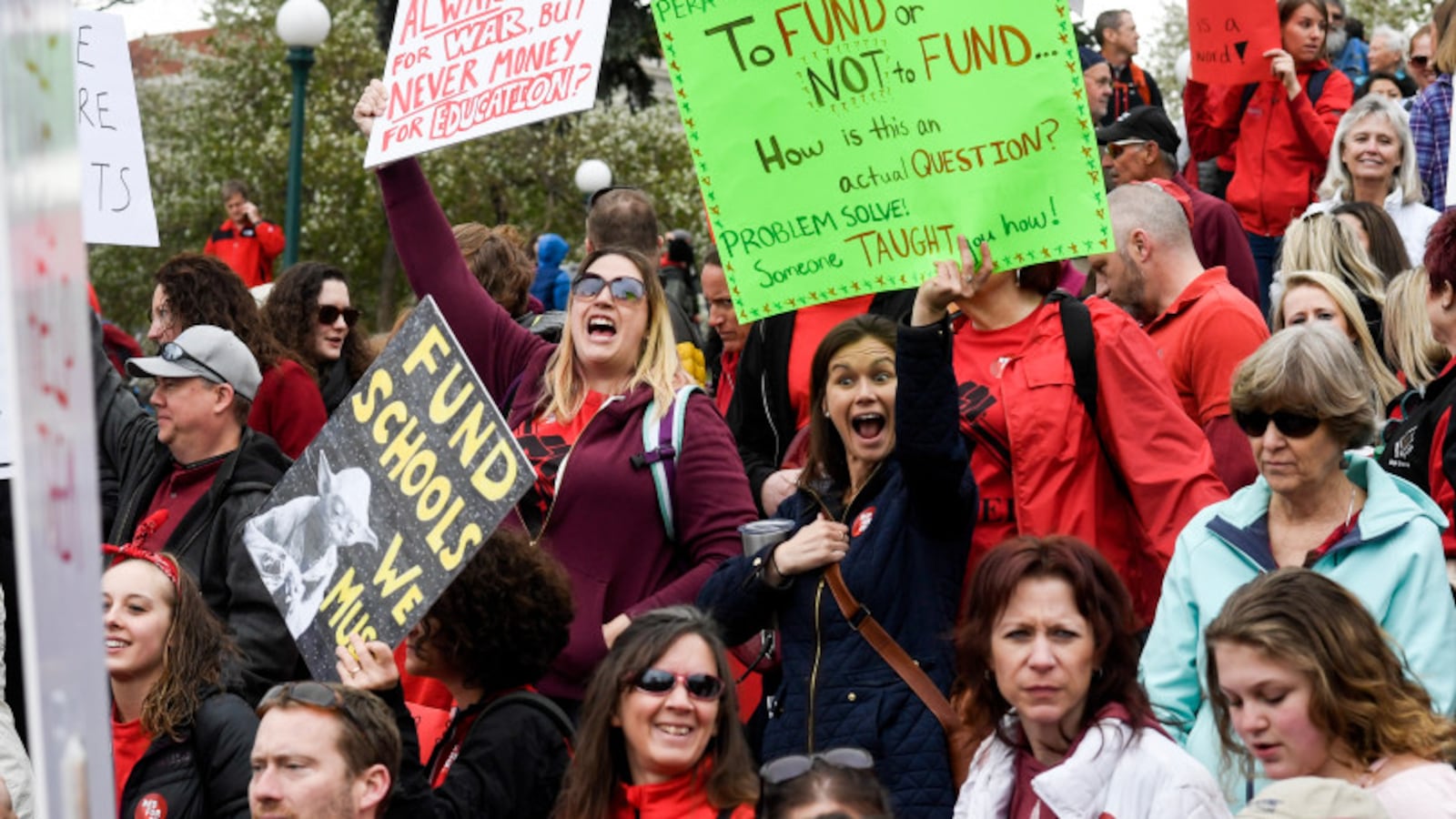“Throwing money at the problem” has long gotten a bad rap in education.
“The notion that spending more money is going to bring about different results is ill-placed and ill-advised,” U.S. Secretary of Education Betsy DeVos said last year.
But a string of recent studies have undermined that perspective. Now, a new review of research drives another nail into the argument’s coffin.
The review looks closely at 13 studies focused on schools nationwide or in multiple states. Twelve found that spending more money meant statistically significant benefits for students, including rising test scores and high school graduation rates.
“By and large, the question of whether money matters is essentially settled,” Northwestern economist Kirabo Jackson concludes. “Researchers should now focus on understanding what kinds of spending increases matter the most.”
In the paper, which was released Monday through the National Bureau of Economic Research and has not been peer-reviewed, Jackson looks at attempts to pin down the effects of school spending. This is critical, because policymakers like DeVos often focus on correlations between spending and test scores.
The results of the 13 studies are remarkably consistent, even though they span different time periods.
For instance, students saw big gains in school districts where spending jumped between 1972 and 1990, one study found. A 10 percent increase in spending across a student’s 12 years in public school led students to complete an additional one-third of a year of school and boosted their adult wages by 7 percent. The gains were largest for low-income kids.
Studies of more recent changes tell a similarly encouraging story. States that increased school funding between 1990 and 2011 saw substantial gains on federal exams soon after, another analysis found.
A separate paper found that 12 percent increases in school spending boosted graduation rates by several percentage points.
And another study found that cutting funding in the wake of the Great Recession hurt student test scores and graduation rates.
Jackson identifies just one national paper without clear positive effects.
“Money used wisely clearly matters,” said Lori Taylor, a Texas A&M school finance researcher who praised Jackson’s study. “One of the takeaways from this newer literature might be that schools are more wise than we thought.”
Studies looking at single states have also found largely encouraging results. One recent study in New York took advantage of a quirk in the state’s funding formula that allowed certain districts with falling enrollment to get extra funding. Those extra dollars led to higher scores on state exams, it found.
Another New York study found that a 2 to 3 percent increase in funding led to a 0.5 to 0.8 percentage point decline in the high school dropout rate.
Head over to Ohio, and the results look similar: passing a funding ballot measure caused a boost in test scores. Three separate papers in Michigan, as well as a study in Massachusetts, found positive results, too. And Jackson’s overview may actually understate the evidence, as it does not include recent research in California and Texas, which also found gains from additional funding.
The only state study that showed unrestricted funding increases did not result in any improvements was a 2003 paper looking at Kentucky.
The pattern is consistent with other recent research overviews, but it’s a sharp departure from an older one by Eric Hanushek, a Stanford economist who has frequently testified on behalf of states defending against lawsuits aimed at increasing school funding. His 1997 review looked at studies conducted before 1995, and found that only 27 percent of the results showed statistically significant gains from additional school spending.
Jackson argues that Hanushek’s review — which was vigorously challenged even at the time — is dated and relies on studies with crude methodologies.
Hanushek concedes that, but says his view on the matter is largely unchanged. The gains shown in the studies in Jackson’s paper differ in size, he said. And he noted a similar correlation to ones that DeVos cites: as spending has increased over the past several decades, scores on 12th grade federal tests have remained largely stagnant.
“The variation in the results that you get indicate quite clearly if I want to fix [a school district] and I just drop money on them, they may or may not get better,” Hanushek said. “It’s how the money is spent more than how much.”
Still, even Hanushek acknowledges there is a case for spending more money in schools.
“I think we’re underinvesting in education in the U.S. and I think it’s pretty serious,” he said. “But I don’t want to just do what we’ve done in the past and hope for something different.”
Jackson’s results are a bit murkier when examining state spending that is earmarked for specific uses. School construction spending, for example, led to gains in some cases but no clear effects in others. A trio of New York City studies found that federal Title I funds targeted at disadvantaged students did not have clear positive effects.
Jackson’s paper also does not review research on spending increases to pay for smaller class sizes, teacher salary increases, tutoring programs, or school turnaround efforts. A number of turnaround initiatives with big price tags have yielded disappointing results.
On balance, Taylor of Texas A&M says that the research points in a clear direction — though it still may not persuade skeptics.
“There were some circles that never bought the premise that money doesn’t matter,” she said. “There are other circles that will never accept the premise that money does matter.”


